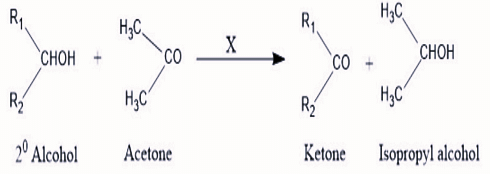An organic compound 'A' with emperical formula $C _6 H _6 O$ gives sooty flame on burning Its reaction with bromine solution in low polarity solvent results in high yield of $B .B$ is
An organic compound 'A' with emperical formula $C _6 H _6 O$ gives sooty flame on burning Its reaction with bromine solution in low polarity solvent results in high yield of $B .B$ is
Show Hint
The Correct Option is C
Approach Solution - 1

Approach Solution -2
Aromatic compounds such as phenols burn with a sooty flame due to incomplete combustion. The reaction of phenol with bromine in the presence of a low polarity solvent like carbon disulfide (\(\text{CS}_2\)) results in the substitution of one of the hydrogen atoms with a bromine atom. Thus, the correct structure for B is obtained by brominating the phenol as shown in option (3).

Top Questions on carbonyl compounds
- Which of the following are neutral?
- KEAM - 2025
- Chemistry
- carbonyl compounds
- Acetone can be converted to 2-methylpropan-2-ol using:
- KEAM - 2025
- Chemistry
- carbonyl compounds
- The correct stability order of carbocations is
- JEE Main - 2024
- Chemistry
- carbonyl compounds
- According to Oppenauer Oxidation reaction, oxidation of secondary alcohol to ketone by reagent (X) in acetone takes place, what is "X" :

- GPAT - 2024
- Organic Chemistry
- carbonyl compounds
- The Gattermann-Koch reaction is used in the industrial preparation of benzaldehyde. The electrophile involved in this reaction is
- CUET (UG) - 2024
- Chemistry
- carbonyl compounds
Questions Asked in JEE Main exam
A bob of mass \(m\) is suspended at a point \(O\) by a light string of length \(l\) and left to perform vertical motion (circular) as shown in the figure. Initially, by applying horizontal velocity \(v_0\) at the point ‘A’, the string becomes slack when the bob reaches at the point ‘D’. The ratio of the kinetic energy of the bob at the points B and C is:

- JEE Main - 2025
- Kinetic Energy
- 20 mL of 2 M NaOH solution is added to 400 mL of 0.5 M NaOH solution. The final concentration of the solution is \(\_\_\_\_\_\) x \(10^{-2}\)M. (Nearest integer)
- JEE Main - 2025
- Solutions
- If equal volumes of AB and XY (both are salts) aqueous solutions are mixed, which of the following combination will give precipitate of AY, at 300 K?
- JEE Main - 2025
- Solutions
- If \[ \lim_{x \to 0} \frac{\cos(2x) + a \cos(4x) - b}{x^4} \] is finite, then \( a + b = \) __.
- JEE Main - 2025
- Trigonometric Equations
- A vessel at 1000 K contains \( \text{CO}_2 \) with a pressure of 0.5 atm. Some of \( \text{CO}_2 \) is converted into \( \text{CO} \) on addition of graphite. If total pressure at equilibrium is 0.8 atm, then \( K_p \) is:
- JEE Main - 2025
- Equilibrium
Concepts Used:
Carbonyl Compounds
The compounds that contain a carbonyl group (the – C=O group) are called carbonyl compounds.
In organic chemistry, the carbonyl group is considered to be the most important functional group. These compounds are the fundamental part of organic chemistry and their primary members are aldehydes, ketones, and carboxylic acids.
Examples of Carbonyl Compounds:
Organic substances include urea and carbamates, to name a few. acyl chlorides, chloroformates, carbonate esters, lactones, lactams, isocyanates, and hydroxamates are examples of phosphorene derivatives.
Carbonyl Group:
Carbon monoxide can also be used as a ligand, either as a ligand or as an organometallic compound (a metal carbonyl, for example, nickel carbonyl).
A carbonyl group is a functional group that consists of a double-bonded carbon atom and an oxygen atom: C=O, according to organic chemistry. Many organic compound classes are found in a variety of larger functional groupings. A carbonyl compound is a substance that has a carbonyl group in it.



